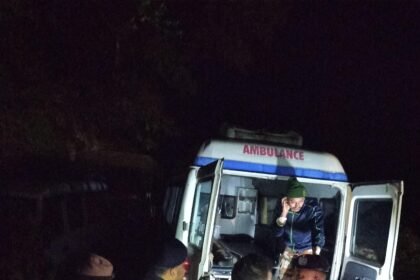EDITORIAL/SA
The government’s decision to introduce the City Runner service in Gangtok is a long-awaited and commendable move toward making urban mobility more accessible, affordable, and efficient for the public. In a town where daily commuting has become increasingly difficult, especially for the elderly, students, and workers, this initiative is a breath of fresh air.
Each year, during peak tourism seasons, particularly in the summer, the city’s transport system struggles under pressure. Taxis, the primary mode of local transport, are often occupied catering to the massive influx of tourists, leaving local residents stranded at taxi stands for hours. Despite the long queues, the availability of taxis for residents becomes scarce, making it a bitter annual experience for many. The introduction of City Runners promises to provide some relief by offering a dependable alternative, especially during these crunch periods.
What’s equally important is that this service must not be limited to just the main highway corridor. Gangtok is no longer a small town confined to MG Marg and its immediate surroundings. The city is expanding year by year, with more people settling in the peripheral and uphill areas, often underserved by current transport options. City Runners should be devoted to arterial and interior routes as well, connecting the growing outskirts to the town center, thus ensuring inclusive and equitable mobility for all residents.
Understandably, there are concerns from the local taxi community, particularly about potential income loss. These voices must be acknowledged and addressed – not dismissed. However, serving the public good does not have to come at the expense of one group. Rather than viewing City Runners and taxis as competitors, this is an opportunity to create a complementary, multi-modal transport system.
Innovative solutions like rotational taxi schedules, an odd-even operation formula, and involvement of local drivers’ associations in planning routes or timings can help strike a balance. The goal must be coexistence, not conflict.
Let us remember: public transport is a public right. Modern urban governance must ensure that no one is left behind – not the drivers, and certainly not the common citizens who depend on regular, safe, and affordable transport. When elderly residents must walk long distances for lack of a ride, or when students cannot rely on transport to reach school on time, the system needs reform.
The City Runner service is not just a policy decision; it is a people-centric solution. However, its success will depend not just on the number of buses, but on how thoughtfully it is implemented. It needs to be driven with empathy, foresight, and the active participation of all stakeholders.
Gangtok has the opportunity to set a model for small hill towns across India, where tourism thrives, but the everyday life of residents should not be compromised. Let us embrace this opportunity with a spirit of progress and cooperation.





